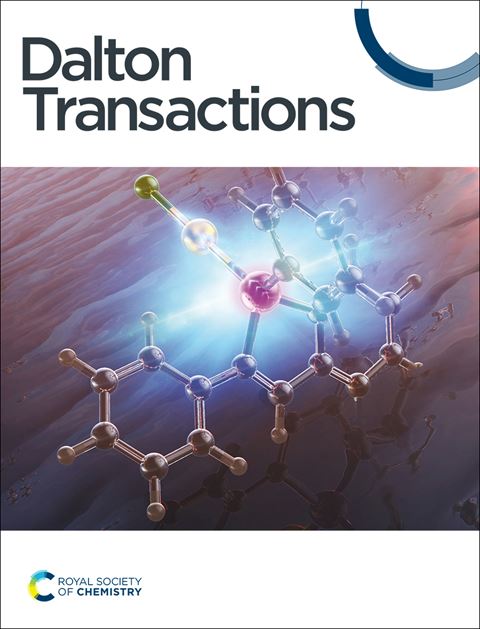Exploring N2 activation using novel Lewis acid/base pairs: computational insight into frustrated Lewis pair reactivity†
IF 3.5
3区 化学
Q2 CHEMISTRY, INORGANIC & NUCLEAR
引用次数: 0
Abstract
The activation of dinitrogen (N2) is a crucial step in synthesizing nitrogen-based compounds and remains a significant challenge due to its strong triple bond. Currently, industrial N2 conversion relies on the Haber-Bosch process, a highly energy-intensive method that utilizes transition metal-based catalysts. Frustrated Lewis pairs (FLPs) have emerged as a promising alternative for N2 activation without the need for transition metals. In this work, we employ density functional theory (DFT) to investigate the activation of N2 by transition metal-free Lewis acids (LAs) and bases (LBs). Our study demonstrates that LAs play a crucial role in capturing N2 and determining the thermodynamics of activation, while LBs play a complementary role by reducing the bond order of the N2 molecule, thereby promoting activation. The efficiency of N2 capture is directly linked to the electroaccepting characteristics of the LAs. A principal component analysis (PCA) reveals that the key factors influencing the electroaccepting power of LAs are the degree of pyramidalization and orbital occupation at the acidic site, as well as the local electrophilicity index. The LA-N2 interaction is found to be electrostatic with partially covalent character. Among the 21 LAs analyzed, triptycene-based systems exhibit the highest stability in forming LA-N2 complexes, highlighting their potential as effective N2-capturing agents. However, the N2 triple bond remains largely intact, necessitating the involvement of LBs in LA-N2-LB complexes for full activation, in a “push-pull” mechanism. Six LBs are analyzed in complexes with the most promising LAs. Bonding analysis indicates that the LB-N2 interaction can be regarded as a covalent bond, which may explain the main role of the LB in the reduction of the N2 bond order. Furthermore, the bond activation is significantly enhanced by increasing the nucleophilicity of the LB. Among all the LA-LB pair combinations, only three exhibit the defining characteristics of frustrated Lewis pairs (FLPs), with moderate interaction energies and substantial LA-LB distances. Our findings suggest that FLPs composed of triptycene-based LAs and tris-tert-butylphosphine represent the most promising candidates for N2 activation.求助全文
约1分钟内获得全文
求助全文
来源期刊

Dalton Transactions
化学-无机化学与核化学
CiteScore
6.60
自引率
7.50%
发文量
1832
审稿时长
1.5 months
期刊介绍:
Dalton Transactions is a journal for all areas of inorganic chemistry, which encompasses the organometallic, bioinorganic and materials chemistry of the elements, with applications including synthesis, catalysis, energy conversion/storage, electrical devices and medicine. Dalton Transactions welcomes high-quality, original submissions in all of these areas and more, where the advancement of knowledge in inorganic chemistry is significant.
 求助内容:
求助内容: 应助结果提醒方式:
应助结果提醒方式:


